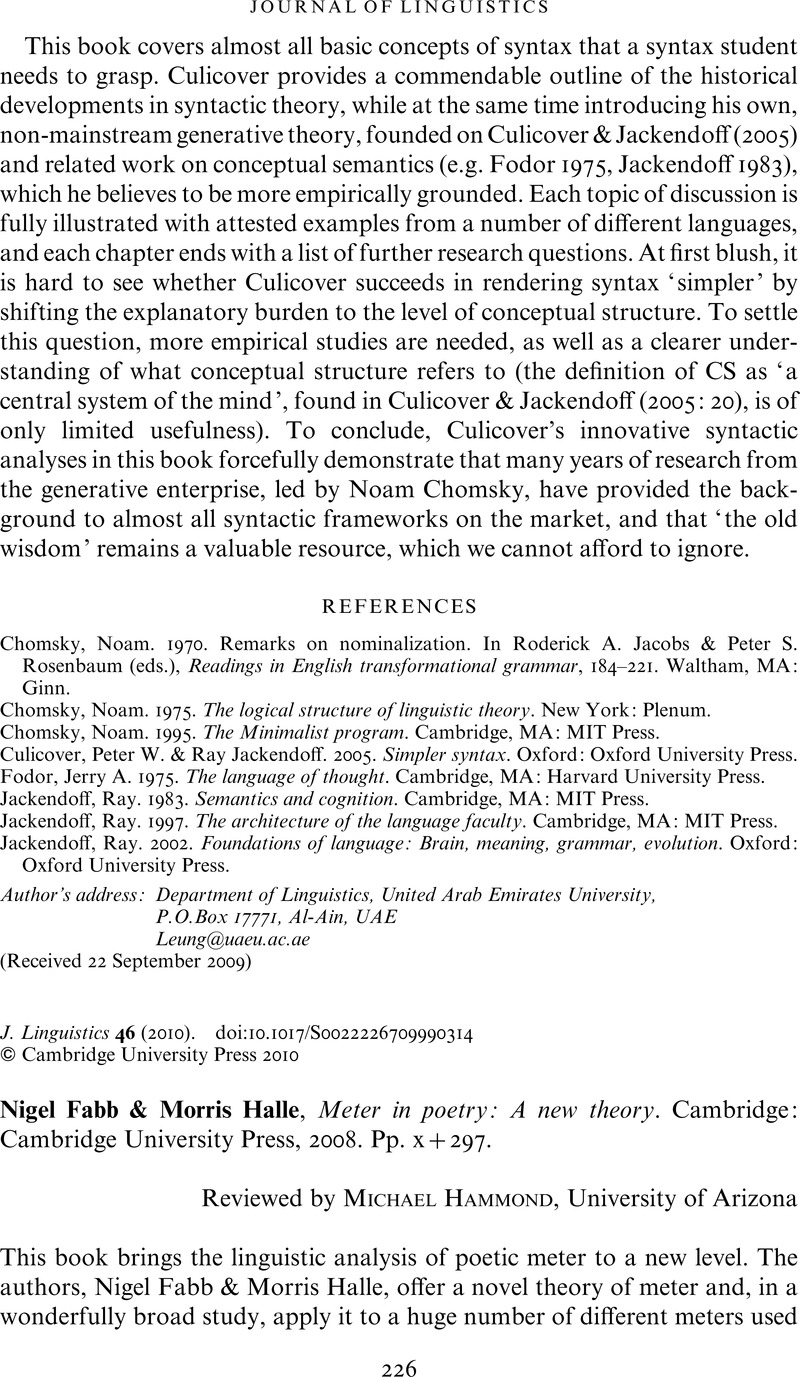Prince, Alan &
Smolensky, Paul.
1993.
Optimality Theory: Constraint interaction in generative grammar (Rutgers Center for Cognitive Science Technical Report 2).
Piscataway, NJ:
Center for Cognitive Science, Rutgers University. [ROA 537; revised version published by Blackwell, Oxford, 2004]
Google Scholar 